Name: Class Name:
Harry O’Brien Greg Purcell ASSESSMENT BOOK
NEW SOUTH WALES SYLLABUS 2023
$20.50
5 STAGE 3 MP_NSW_AB5_38213_TXT_PPS_NG.indb 1 23-Aug-23 12:38:08
DRAFT
Oxford University Press is a department of the University of Oxford. It furthers the University’s objective of excellence in research, scholarship, and education by publishing worldwide. Oxford is a registered trademark of Oxford University Press in the UK and in certain other countries.
Published in Australia by Oxford University Press
Level 8, 737 Bourke Street, Docklands, Victoria 3008, Australia.
© Harry O’Brien and Greg Purcell 2023
The moral rights of the authors have been asserted.
First published 2023
All rights reserved. No part of this publication may be reproduced, stored in a retrieval system, or transmitted, in any form or by any means, without the prior permission in writing of Oxford University Press, or as expressly permitted by law, by licence, or under terms agreed with the reprographics rights organisation. Enquiries concerning reproduction outside the scope of the above should be sent to the Rights Department, Oxford University Press, at the address above.
You must not circulate this work in any other form and you must impose this same condition on any acquirer.
ISBN 9780190338213
Reproduction and communication for educational purposes
The Australian Copyright Act 1968 (the Act) allows educational institutions that are covered by remuneration arrangements with Copyright Agency to reproduce and communicate certain material for educational purposes. For more information, see copyright.com.au.
Edited by Fiona Olney-Fraser
Cover illustration by Wesley Valenzuela
Typeset by Newgen KnowledgeWorks Pvt. Ltd., Chennai, India
Illustrated by Gareth Conway, Gregory Baldwin and Daniel Rieley
Proofread by Cara Torrance
Printed in China by Golden Cup Printing Co Ltd
Oxford University Press Australia & New Zealand is committed to sourcing paper responsibly.
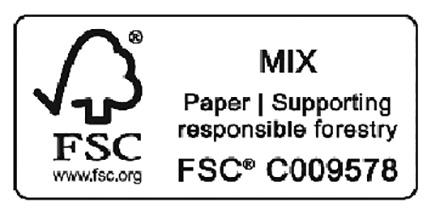
Acknowledgements
NSW Mathematics K–6 Syllabus © NSW Education Standards Authority for and on behalf of the Crown in right of the State of New South Wales, 2023. NESA does not endorse model answers prepared by the Publisher and takes no responsibility for errors in the reproduction of the Material supplied by NESA.
Acknowledgement of Country
Oxford University Press acknowledges the Traditional Owners of the many lands on which we create and share our learning resources. We acknowledge the Traditional Owners as the original storytellers, teachers and students of this land we call Australia. We pay our respects to Elders, past and present, for the ways in which they have enabled the teachings of their rich cultures and knowledge systems to be shared for millennia.
MP_NSW_AB5_38213_TXT_PPS_NG.indb 2 23-Aug-23 12:38:08
Printer FSC logo
DRAFT
Message to teachers
Maths Plus Assessment Book Year 5 is an easy-to-use book for both students and teachers. It provides students and teachers with an assessment book that should easily fit into the whole-school maths assessment policy of most schools. The book is designed to diagnostically assess students at Year 5 level. Each assessment page is a snapshot of work that addresses the specific outcomes from the NESA Syllabus. The book provides students with a variety of opportunities to demonstrate their skills, knowledge and understanding of key concepts in Number, Algebra, Measurement, Space, Statistics and Probability. The pages in this book can assist with:
• assessing understanding of specific knowledge required by the NESA Syllabus
• diagnosing students’ knowledge to assist with future scaffolding of work
• providing evidence for A–E reporting
• providing meaningful work samples of students’ work and understanding. Supported by discussion, observation, hands-on experiences and teachers’ own observations, these assessment pages can become a useful component in assisting teachers to accurately assess their students.
Answers for the assessment tasks and a Student Book–Assessment Book correlation chart can be found online on the Maths Plus Teacher Dashboard.
Harry O’Brien, Greg Purcell
A iii
MP_NSW_AB5_38213_TXT_PPS_NG.indb 3 23-Aug-23 12:38:08 DRAFT
A iv Oxford University Press ISBN 9780190338213 Assessment Stage 3 outcomes Page Number and algebra Whole numbers Applies an understanding of place value and the role of zero to represent the properties of numbers MA3-RN-01 2 Decimals Compares and orders decimals up to 3 decimal places MA3-RN-02 3 Fractions Compares and orders fractions with denominators of 2, 3, 4, 5, 6, 8 and 10 MA3-RQF-01 4 Add and subtract fractions Compares and orders fractions with denominators of 2, 3, 4, 5, 6, 8 and 10 MA3-RQF-01 Determines 1 2 , 1 4 , 1 5 and 1 10 of measures and quantities MA3-RQF-02 5 Addition and subtraction strategies Selects and applies appropriate strategies to solve addition and subtraction problems MA3-AR-01 6 Division Selects and applies appropriate strategies to solve multiplication and division problems MA3-MR-01 7 Multiplication Selects and applies appropriate strategies to solve multiplication and division problems MA3-MR-01 8 Order of operations Constructs and completes number sentences involving multiplicative relations, applying the order of operations to calculations MA3-MR-02 9 Measurement and space Coordinates Locates and describes points on a coordinate plane MA3-GM-01 10 Length and perimeter Selects and uses the appropriate unit and device to measure lengths and distances including perimeters MA3-GM-02 11 Angles Measures and constructs angles, and identifies the relationships between angles on a straight line and angles at a point MA3-GM-03 12 Triangles/quadrilaterals Investigates and classifies two-dimensional shapes, including triangles and quadrilaterals based on their properties MA3-2DS-01 13 Triangles, quadrilaterals and symmetry Investigates and classifies two-dimensional shapes, including triangles and quadrilaterals based on their properties MA3-2DS-01 14 Contents MP_NSW_AB5_38213_TXT_PPS_NG.indb 4 23-Aug-23 12:38:08 DRAFT
A v Oxford University Press ISBN 9780190338213 Assessment Stage 3 outcomes Page Measurement and space Area Selects and uses the appropriate unit to calculate areas, including areas of rectangles MA3-2DS-02 15 3D objects Visualises, sketches and constructs three-dimensional objects, including prisms and pyramids, making connections to two-dimensional representations MA3-3DS-01 16 Volume/capacity Selects and uses the appropriate unit to estimate, measure and calculate volumes and capacities MA3-3DS-02 17 Mass Selects and uses the appropriate unit and device to measure the masses of objects MA3-NSM-01 18 Time Measures and compares duration, using 12- and 24-hour time and am and pm notation MA3-NSM-02 19 Statistics and probability Data displays Constructs graphs using many-to-one scales MA3-DATA-01 Interprets data displays, including timelines and line graphs MA3-DATA-02 20 Chance Conducts chance experiments and quantifies the probability MA3-CHAN-01 21 MP_NSW_AB5_38213_TXT_PPS_NG.indb 5 23-Aug-23 12:38:08
DRAFT
Write these numbers in numerals.
1 Two hundred and thirty-seven
2 Two thousand, seven hundred and twelve
3 Five thousand, four hundred and sixty-two
4 Thirty-five thousand, three hundred and sixty-five
5 Two hundred and twenty-seven thousand, six hundred and ninety-four
State the place value of each bold digit.
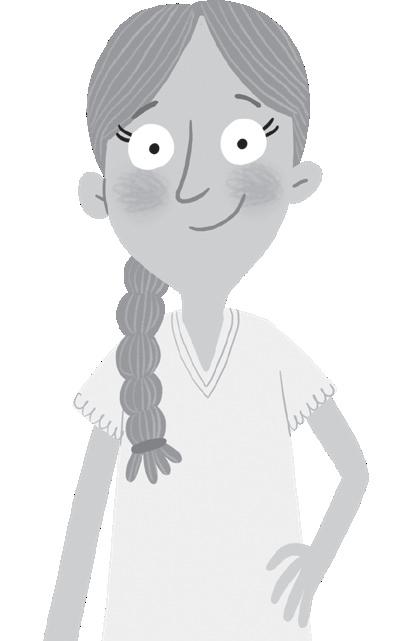
Order these numbers from smallest to largest.
Expand the following numbers. The first one has been done for you.
A 2 Oxford University Press ISBN 9780190338213
Applies an understanding of place value and the role of zero to represent the properties of numbers MA3-RN-01
Whole numbers
6 234 7 2345 8 42 156 9 362 157 10 674 132 11 374 592
12 6542 7764 6764 13 27 394 39 273 19 352 14 232 164 199 999 321 424 15 263 305 263 503 263 035
16 6247 6000 + 200 + 40 + 7 17 4382 + + + 18 94 456 + + + + 19 378 291 + + + + + 20 282 008 + + +
1 2 6 7 5 3 3
hundreds
millions MP_NSW_AB5_38213_TXT_PPS_NG.indb 2 23-Aug-23 12:38:08 DRAFT
ones
tens
? ? ?
Describe the shaded section of the hundredths grids as two-place decimals.
Give the place value of each bold digit.
5 9.325
6 1.468
7 9.921
8 3.713
Recently, Year 5 students visited the Sports Laboratory, where they participated in a series of tests that measured their levels of fitness, flexibility and skill. The first group had their mass and height measured.
13 Write the students’ names on the ladder in order of height, from shortest to tallest.
14 Write the students’ names on the scales in order of mass, from lightest to heaviest.
A 3 Oxford University Press ISBN 9780190338213 Decimals Compares and orders decimals up to 3 decimal places MA3-RN-02
Name Mara Noah Will Jade Height (m) 1.62 1.61 1.63 1.59 Mass (kg) 45.550 45.546 45.545 44.915
5 2 7 6 . 3 4 8 Ones Tens Hundreds Tenths Thousands Hundredths Thousandths Ones 0 0 0 0 Tenths Hundredths Ones Tenths Hundredths Ones 0 0 0 0 Tenths Hundredths Ones Tenths Hundredths Decimal place value 9 3.428 10 4.817 11 7.252 12 2.789 1 3 2 4 MP_NSW_AB5_38213_TXT_PPS_NG.indb 3 23-Aug-23 12:38:09 DRAFT
Decide whether these statements are true (T) or false (F).
Place these fractions in order from smallest to largest.
The largest fractions are closest to 1.
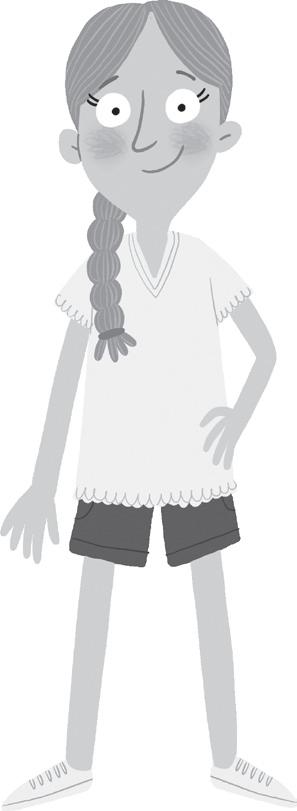
13 Explain why 1 2 is larger than 1 8 .
14 Colour 1 2 of the circle blue.
15 Colour 1 10 of the circle red.
16 Colour 1 5 of the circle green.
17 What fraction of the circle has not been coloured: 1 5 or 1 10 ?
A 4 Oxford University Press ISBN 9780190338213 Fractions Compares and orders fractions with denominators of 2, 3, 4, 5, 6, 8 and 10 MA3-RQF-01
1 1 4 < 1 2 2 1 4 > 1 8 3 1 2 > 3 4 4 1 2 = 4 8 5 1 3 < 1 6 6 4 5 < 5 10 7 5 10 > 1 2 8 4 4 = 8 8
9 3 5 2 8 3 4 1 2 10 1 2 7 10 3 4 1 5 11 5 8 5 6 1 3 5 10 12 9 10 3 3 3 5 3 4
Fraction wall 1 Whole Whole 1 2 2 2 Halves 1 4 2 4 3 4 4 4 Quarters 1 8 2 8 3 8 4 8 5 8 6 8 7 8 8 8 Eighths 1 3 2 3 3 3 Thirds 1 6 2 6 3 6 4 6 5 6 6 6 Sixths Fifths Tenths 1 5 2 5 3 5 4 5 5 5 1 10 2 10 3 10 4 10 5 10 6 10 7 10 8 10 9 10 10 10 MP_NSW_AB5_38213_TXT_PPS_NG.indb 4 23-Aug-23 12:38:09 DRAFT
Use the models to help add the fractions.
Add the fractions, which have a sum greater than 1. Show how your answer can be shown as a whole number and a fraction. The first one is done for you.
Subtract the fraction from 1 whole.
12 How many tenths does Alina have now if she was given 9 10 of a chocolate bar, but gave 3 10 to Jade?
13
How many fifths of the pentagon puzzles does Ryder have if he has 4 5 of the red one and 3 5 of the green one?
A 5 Oxford University Press ISBN 9780190338213 Add and subtract fractions Compares and orders fractions with denominators of 2, 3, 4, 5, 6, 8 and 10 MA3-RQF-01 Determines 1 2 , 1 4 , 1 5 and 1 10 of measures and quantities MA3-RQF-02
1 1 5 + 3 5 = 5 2 3 + 2 3 = 4 3 = 1 1 3 7 4 5 + 4 5 = = 9 1 – 1 4 = 10 1 – 1 5 = 11 1 – 1 6 = 3 3 10 + 4 10 = 2 1 8 + 5 8 = 6 3 4 + 3 4 = = 8 5 8 + 5 8 = = 4 3 6 + 2 6 = + + + + + + + + + + + + + + + + MP_NSW_AB5_38213_TXT_PPS_NG.indb 5 23-Aug-23 12:38:10 DRAFT
Addition and subtraction strategies
Bridge to a decade to calculate the totals. 1
Think
Split the numbers into hundreds, tens and ones in order to add or subtract these numbers.
Use bridging to add these amounts. The first one is done for you.
80
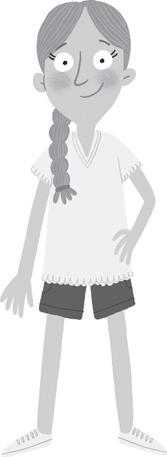

5 + 4 9
Equals 789
Use the constant difference to complete these subtractions.
7 10 785 – 352 = 11 489 – 267 = 12 597 – 352 = estimate MP_NSW_AB5_38213_TXT_PPS_NG.indb 6 23-Aug-23 12:38:10
8 DRAFT
A 6 Oxford University Press ISBN 9780190338213 Selects and applies appropriate strategies to solve addition and subtraction problems MA3-AR-01
38
35
46 + 37 = 3 64 + 29 = 4 128 + 34 = 5 138 + 24 = 6 218 + 65 =
+
= 2
17 3784 – 2994
18 7362 – 3997 = 19 9231 – 4995 = 20 9274 – 5998 = 21 9575 – 6996 = 22 5412 – 2993 =
=
5990 6000 13 5987 + 365 = 5987 + 3 + 10 + 352 = 6352 14 4984 + 437 = 15 7976 + 236 = 16 3979
585
+ 48
+
= 357
357 + 48 Think 357 + 40 = 397. Then add 3 and 5 more. 5987 is almost 6000,
4172
1996 Add 4 to
4176 – 2000 = 2176 465 + 324 400 + 300 700 60 + 20 80 5 + 4 9 Equals 789 4172 – 1996
4 to
4176 – 2000 = 2176 465 + 324 400 + 300 700 60 + 20
357 + 40 = 397. Then add 3 and 5 more.
so I knew the total would be about 6350.
–
both numbers.
Add
both numbers.
23 4 8 7 0 + 2 0 2 3 28 5 5 9 9 – 3 4 0 2 24 5 7 4 2 + 2 4 2 3 29 7 6 7 5 – 4 5 3 2 25 2 7 5 2 + 5 1 4 3 30 9 7 8 9 – 1 4 6 9 26 3 8 6 4 + 5 0 3 5 31 8 4 5 8 – 4 3 2 7 27 3 8 4 5 + 6 1 4 0 32 6 5 8 9 – 1 4 4 6
538 + 243 =
Estimate an answer to each addition and subtraction before completing them. 645 + 463 = 9 738 + 372 =
Use the halve and halve again strategy to divide by 4.
1 112 ÷ 4 =
2 128 ÷ 4 =
3 144 ÷ 4 =
Use the halve, halve and halve again strategy to divide by 8.
4 240 ÷ 8 =
5 320 ÷ 8 =
6 280 ÷ 8 =
Supply the missing quotient, including the remainder, in the number sentences, which describe how the arrays have been divided. The first one has been started for you.
Answer these division facts with remainders. 11
Write your answer with a fractional remainder.
If the divisor is a composite number, it can be broken into factors to make division easier. Use factors of the divisor to find these quotients. The first one has been started.
26 How many 5 kg packets of nails are in the crate if the total mass of the contents is 720 kg?
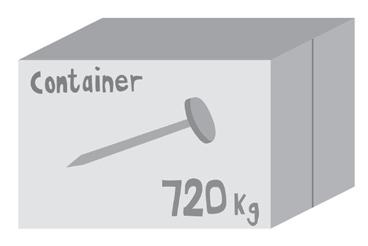
27 How many 9 kg packets of nails could fit in the crate?
28 How many 4 kg packets of nails could fit in the crate?
A 7 Oxford University Press ISBN 9780190338213
Division Selects and applies appropriate strategies to solve multiplication and division problems MA3-MR-01 4 7 7 22 ÷ 3 = 6 r4 8 22 ÷ 6 = 9 30 ÷ 4 = 10 30 ÷ 7 =
÷ 4 = r
÷ 9 = r
45 ÷ 6 = r 14 50 ÷ 7 = r 15 42 ÷ 5 = r 16 63 ÷ 8 = r
33
12 47
13
17 4ǀ 4 7 7 18 5ǀ 2 5 6 19 3ǀ 7 4 9 3 20 6ǀ 4 9 7 3 21 8ǀ 8 6 4 9
3 6
Problem Factors of divisor Process Quotient 22 144 ÷ 12 2 and 6 144 ÷ 2 = 72 then 72 ÷ 6 23 360 ÷ 15 ÷ = then ÷
180 ÷ 12 ÷ = then ÷
24
÷ =
÷ MP_NSW_AB5_38213_TXT_PPS_NG.indb 7 23-Aug-23 12:38:10 DRAFT
25 1600 ÷ 20
then
Mentally calculate the answers to these questions. 1
3 × 4 = 12
So: 3 × 4 tens = 12 tens (120)

3 × 40 = 120
32 × 4 =
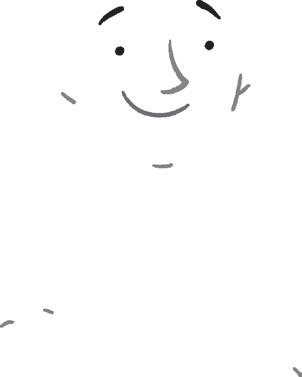
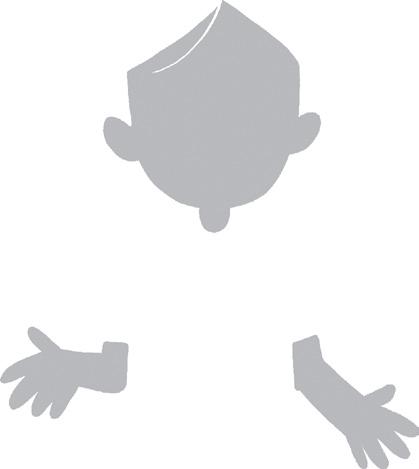
Think:
Calculate the answers to these multiplications.
Use the area model to find these products. The first one has been started for you.
Use the distributive property of multiplication to find these products. The first one has been done for you.
Make an estimate of what you think the answer should be.
Example: 8 x 395
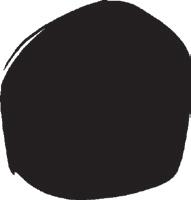
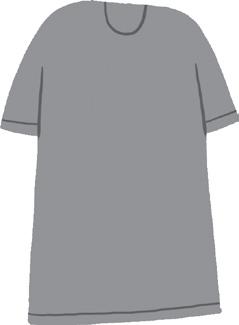
Think: 8 x 400 = 3200
8 x 395 should be about 3200.
A 8 Oxford University Press ISBN Multiplication
5 × 5 = 2 5 × 50 = 5 9 × 8
6 9
6 × 6 = 4 6 × 60 = 7 5 ×
8 7 ×
9 3 4 8 × 6
=
× 80 = 3
73 =
84 =
30 × 4 = 120 2 × 4 = 8 120 + 8 = 128
14 3 × 38 = 15 4 × 54 = 16 5 × 65 = 17 4 × 365 =
and applies appropriate strategies to solve multiplication and division problems MA3-MR-01 10 3 3 5 3 × 7 11 3 9 × 5 0 12 6 9 × 2 4 13 4 6 2 × 4 8 = = = =
Selects
Problem Distribution Product 18 6 × 462 6 × (400 + 60 + 2) = 2400 + 360 + 12 2772 19 5 × 643 20 8 × 395 21 4 × 527 30 8 3 90 24 300 60 5 4 + + + + +
MP_NSW_AB5_38213_TXT_PPS_NG.indb 8 23-Aug-23 12:38:10 DRAFT
Rules for order of operations
Always do the work in the grouping symbols (brackets) first. (3 x 6) x 7 = 126
Do the operations with division and multiplication from left to right. 3 x 8 ÷ 2 = 12
Do operations with addition and subtraction from left to right. 5 + 8 – 6 = 7
Do multiplication and division before addition and subtraction. 6 + 8 x 3 = 30
Follow the order of operations rules to complete these number sentences.
1 6 x 4 ÷ 3 =
2 12 + 24 ÷ 3 =
3 105 – 5 x 8 =
4 (20 + 20) ÷ 4 =
5 5 x 10 ÷ 5 + 4 =
6 5 + 4 x 8 =
7 (5 + 4) x 8 =
8 36 ÷ 9 x 2 =
9 36 ÷ (9 x 2) =
10 50 x 10 ÷ 2 =
Do work inside the brackets first.
Create number sentences that will help solve the problems below.
11 How much did Zac earn if he worked for 3 hours @ $40 per hour and 2 hours @ $50 per hour?
DRAFT
13 How much washing powder is left in the 1 kilogram pack if 5 scoops of 25 grams were used to wash the uniforms?
12 How far did Hanika swim in the 50 metre pool if she did 6 laps of freestyle and 4 laps of backstroke?
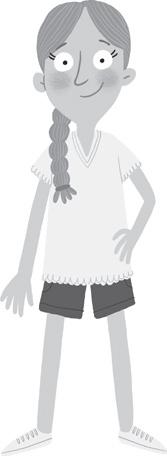
14 Eve’s holiday house is 250 km away. How far does she still have to go if she has driven for 2 hours @ 80 km/h?
15 Complete the number cross.
A 9 Oxford University Press ISBN 9780190338213
Across 2 40 ÷ 5 = ÷ 3 4 × 3 = 4 × 9 5 3 × 2 = 60 ÷ 7 72 ÷ 2 = × 12 8 28 × 2 = × 8 10 100 ÷ = 10 × 2 11 × 10 = 200 ÷ 2 13 7 × = 100 – 51 14 × 12 = 6 × 8 16 60 ÷ = 100 ÷ 20 17 ÷ 7 = 16 ÷ 4 Down
1 62 = × 3 3 ÷ 3 = 32 + 1 6 ÷ 9 = 51 ÷ 17 9 + 32 = 5 × 6 12 ÷ 4 = 81 ÷ 9
1 2 3 4 5 6 7 8 9 10 11 12 13 14 15 16 17
15 54 ÷ 9 = ÷ 7
Order of operations
MP_NSW_AB5_38213_TXT_PPS_NG.indb 9 23-Aug-23 12:38:10
Constructs and completes number sentences involving multiplicative relations, applying the order of operations to calculations MA3-MR-02
Name the school building or field found at these coordinates.
Remember, the first number refers to a point on the x-axis and the second number refers to a point on the y-axis
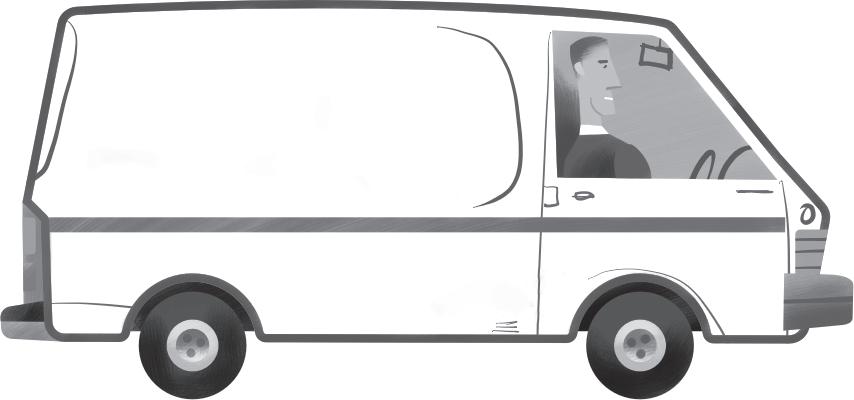
Use the map below to help answer the following questions.
Plot the coordinates (1,6), (2,5), (4,5), (8,4), (10,2), (9,1), (7,1), (3,1), (3,2), (2,2) and (2,3), then join them to see the route the post van takes.
8 Which street did the route finish in?
9 What are the coordinates for the intersection of Bent Rd and Porters Rd?
10 What are the coordinates for the intersection of Porters Rd and Dobe Place?
A 10 Oxford University Press ISBN 9780190338213 Locates and describes points on a coordinate plane MA3-GM-01 Coordinates
ROAD ROAD ROAD HAFEY ROAD PORTERS PORTERS ROAD PORTERS SCOTT PLACE PUGGLES DOBE PLACE 1 2 3 4 5 6 7 8 9 10 1 2 3 4 5 7 6 BENTROAD Post
STRANTH ROAD
7
Block C Block B Football field School office Lunch seats Assembly hall Block A 0 1 1 3 4 5 y 2 0 2 3 4 5 6 x
MP_NSW_AB5_38213_TXT_PPS_NG.indb 10 23-Aug-23 12:38:11 DRAFT
1 (5,1) 2 (1,4) 3 (2,1) 4 (4,3) 5 (5,4) 6 (3,4)
If you know that all the sides of a 2D shape are equal in length, the perimeter can be found by multiplying the length of one side by the number of sides.
10 Draw a line to match each distance to a sporting site.
using decimal
A 11 Oxford University Press ISBN 9780190338213
Selects and uses the appropriate unit and device to measure lengths and distances including perimeters MA3-GM-02 Measure the length of each side to calculate the perimeter of each shape. 1 P = ______ cm 2 P = ______ cm 3 P = ______ cm 4 P = ______ cm 5 P = ______ cm
Length and perimeter
the metres
18 Metres 6325 7654 9999 4145 8008 1566 2880 5005 Kilometres Convert the kilometres into metres. 19 20 21 22 23 24 25 Kilometres 4.699 3.456 7.252 9.301 8.943 6.006 21 Metres Multiply by
to
kilometres
metres. Divide by 1000
Square Rhombus y y x x Equilateral triangle Hexagon Perimeter = Perimeter = Perimeter = Perimeter = 5 cm 7 cm 8 cm 4 cm 6 7 8 9 Netball court Football field Olympic swimming pool Beach volleyball court 50 metres 30 metres 100 metres 18 metres
Convert
into kilometres,
notation. 11 12 13 14 15 16 17
1000
convert
into
to convert metres into kilometres.
MP_NSW_AB5_38213_TXT_PPS_NG.indb 11 23-Aug-23 12:38:11 DRAFT
1 In which shape above are all the angles acute angles?
2 In which shape above are all the angles obtuse angles?
3 In which shape above are all the angles right angles?
Measure these angles using a protractor.
Use the base line to construct the angles using a protractor. 8 9
A 12 Oxford University Press ISBN 9780190338213 Angles Measures and constructs angles, and identifies the relationships between angles on a straight line and angles at a point MA3-GM-03
4 5 6 7
An acute
An obtuse
List outcomes of chance experiments involving equally likely outcomes and represent probabilities of those outcomes using fractions (ACMSP116) MP_NSW_AB5_38213_TXT_PPS_NG.indb 12 23-Aug-23 12:38:11 DRAFT
angle of 30°
angle of 120°
Investigates and classifies two-dimensional shapes, including triangles and quadrilaterals based on their properties MA3-2DS-01
Draw a line to match each quadrilateral to its description.
1 2 y y
x x
Parallelogram
• Opposite sides are parallel
• Opposite sides are of equal length
3
4
Trapezium
• One pair of parallel sides
Rectangle
• 4 right angles
• Two sets of parallel lines of equal length
Rhombus
• Opposite angles are equal
• 4 equal sides
• Two sets of parallel lines
Measure and record the angles on the triangles. Name each type of triangle.
equilateral isosceles right angle scalene
5 6 7 8
9 Construct an equilateral triangle with sides of 40 mm. Measure and label all three angles.
10 Construct and label an isosceles triangle with two sides the same length and two angles the same size.
A 13 Oxford University Press ISBN
9780190338213 Triangles/ quadrilaterals
MP_NSW_AB5_38213_TXT_PPS_NG.indb 13 23-Aug-23 12:38:11
DRAFT
Triangles, quadrilaterals and symmetry
Polygons are shapes with three or more straight sides.
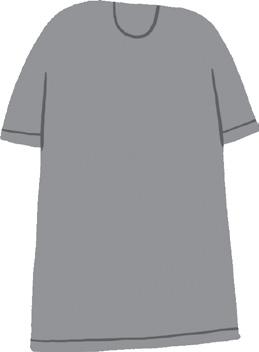
1 Which shapes below are polygons?____________________________________
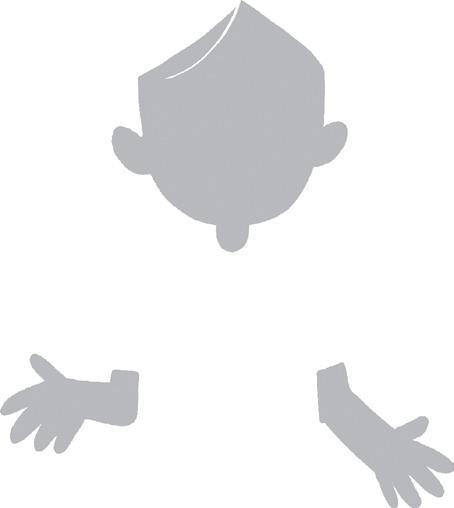

2 Which shapes above are also quadrilaterals? ________________

3 Draw diagonals on the rectangle.
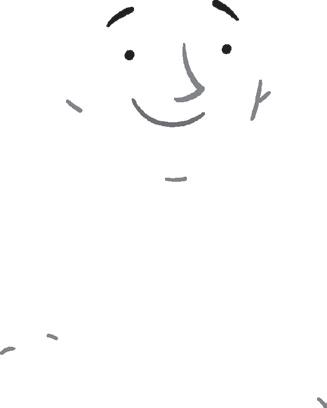
4 Draw all lines of symmetry on the square.
5 Circle all the shapes below that have rotational symmetry.
6 Draw a line to match each right-angled triangle to a name.
D Scalene triangle Isosceles triangle
Isosceles and scalene triangles can also be right-angled triangles. Equilateral triangles cannot be right angled.
A 14 Oxford University Press ISBN
Investigates and classifies two-dimensional shapes, including triangles and quadrilaterals based on their properties MA3-2DS-01
A B C D F G E H I J
A
MP_NSW_AB5_38213_TXT_PPS_NG.indb 14 23-Aug-23 12:38:11
DRAFT
A netball court is 30 metres long and 15 metres wide.
The court is divided into three equal sections.
11 Calculate the area of the whole court and the area of the centre third.
Whole court Centre third
A 15 Oxford University Press ISBN 9780190338213 Measure and record each shape’s dimensions and then calculate the area of each shape. Area = length x width 6 A = ______ cm2 9 A = ______ cm2 7 A = ______ cm2 8 A = ______ cm2 10 A = ______ cm2 Area
the area unit you would use to measure the areas. Area cm2 m2 ha
The area of a
of football fields
The
of
The
of a
Selects and uses the appropriate unit to
calculate
areas, including areas of rectangles MA3-2DS-02
Tick
1
number
2
area
this page 3
area
large billboard
4 The area of a birthday card
5 The area of a handball court
A = L × W A = L × W A = _____m2 A = ______ m2 30 metres 15 metres 10 m 10 m 10 m MP_NSW_AB5_38213_TXT_PPS_NG.indb 15 23-Aug-23 12:38:12
DRAFT
3D objects
Draw a line to match each object to its net. Write the name of the object below each one. 1 2 3 4
Draw a line to match the objects to their descriptions given in the table below.
A 16 Oxford University Press ISBN 9780190338213
Shape of base Faces Vertices Edges 5 Square 6 8 12 6 Rectangle 5 5 8 7 Triangle 5 6 9 8 Pentagon 6 6 10 9 Hexagon 8 12 18 10 Triangle 4 4 6
11 vertex edge Front 12 Front Top view Front view Side view
Draw the top, front and side views of these models.
MP_NSW_AB5_38213_TXT_PPS_NG.indb 16 23-Aug-23 12:38:12 DRAFT
Visualises, sketches and constructs three-dimensional objects, including prisms and pyramids, making connections to two-dimensional representations MA3-3DS-01
Use cubic centimetre blocks to construct shapes like these. Estimate, then measure and record each shape’s volume.
4 How many millilitres of water are in the beaker?
5 How many millilitres would need to be added to fill the beaker to 500 mL?
6 How many full 500 mL beakers would be needed to fill a 3 L jug?
Fact: One millilitre of water has a mass of 1 gram and a volume of 1 cubic centimetre. This means that for every cubic centimetre block that is added to a jug of water, the water level will rise by 1 mL.
At the moment, the measuring glass is filled to the 30 mL mark.
Colour the mark on the measuring glass to show how much water would be displaced if a 20 cm3 block was placed inside the measuring glass.
Complete this millilitres/litres conversion chart.
A 17 Oxford University Press ISBN 9780190338213 Volume/capacity Selects and uses the appropriate unit to estimate, measure and calculate volumes and capacities MA3-3DS-02
500 mL 50 mL 100 mL 150 mL 200 mL 250 mL 300 mL 350 mL 400 mL 450 mL
2 cm 3 cm 4 cm 3 cm 4 cm 4 cm 3 cm 3 cm 5 cm 1 Volume = cm3 2 Volume = cm3 3 Volume = cm3
8 9 10 11 12 13 14 Millilitres 1500 2000 2500 7395 Litres 3.250 4.550 9.545 10 mL 20 mL 30 mL 40 mL 50 mL
7 MP_NSW_AB5_38213_TXT_PPS_NG.indb 17 23-Aug-23 12:38:12
DRAFT
The scales below show pieces of fruit being balanced by blocks and a 1 kg weight.
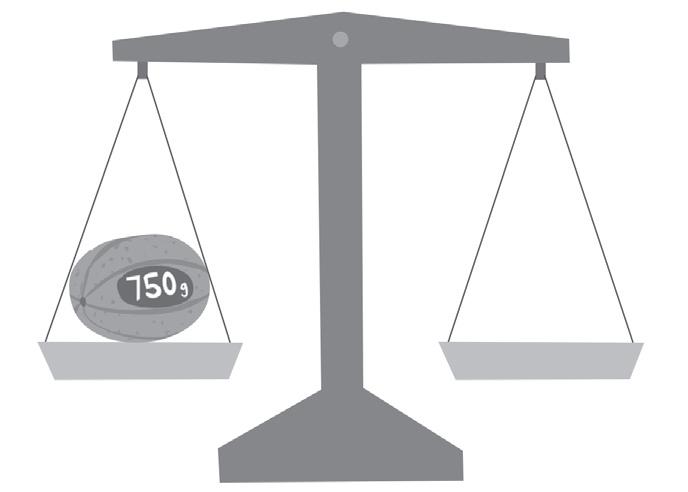
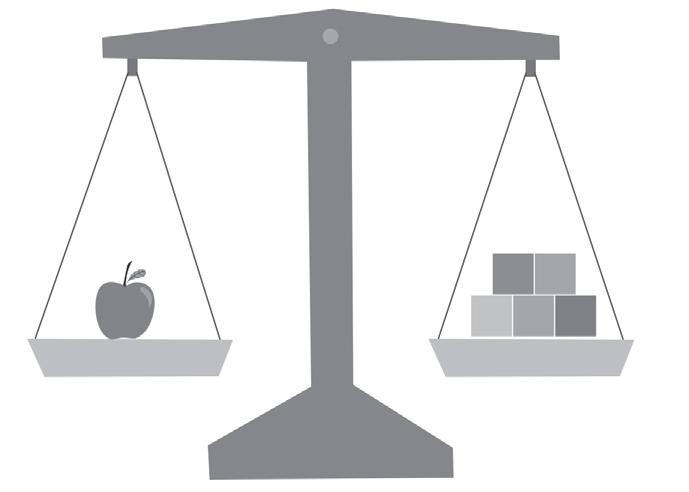
1 How many blocks were needed to balance the apple?
2 How many apples were needed to balance the 1 kg mass?
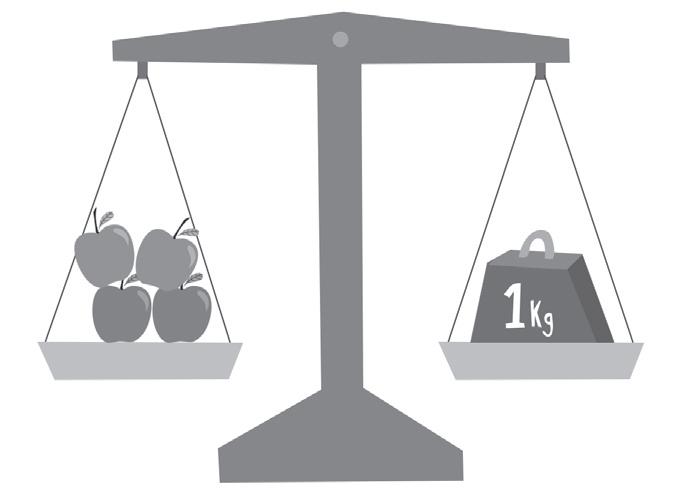
3 How many blocks would it take to balance a 1 kg mass?
4 How many apples would it take to balance a 750 g rockmelon?
5 What is the mass of one block?
Convert the measurements below from grams to kilograms. Use decimal notation to record the kilogram measurements.
Convert the measurements below from tonnes to kilograms.
Remember! 1 litre of water has a mass of 1 kilogram.
The truck below can carry only 1 tonne. How many of each type of container filled with water would equal 1 tonne? 22 23 24 25
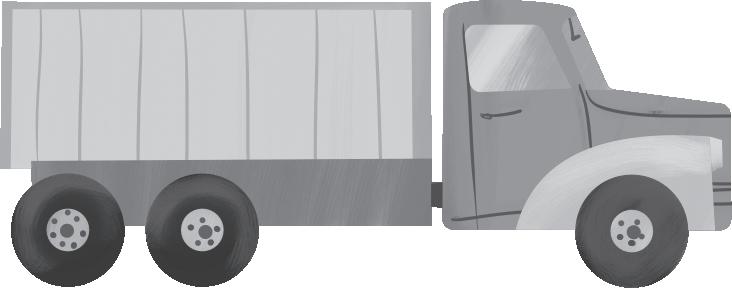
A 18 Oxford University Press ISBN 9780190338213 Mass Selects and uses the appropriate unit and device to measure the masses of objects MA3-NSM-01
6 7 8 9 10 11 12 13 Grams 2000 2500 6000 8450 6700 9095 3175 4855 Kilograms
14 15 16 17 18 19 20 21 Tonnes 1 2.5 3.250 5.750 8.1 9.333 5.456 1.010 Kilograms
H2O 1 tonne Water 2 L Water 1 L 5 L Water 200 L Water rockmelon MP_NSW_AB5_38213_TXT_PPS_NG.indb 18 23-Aug-23 12:38:13 DRAFT
On each clock, show the 24-hour time given, then write the times in 12-hour digital form.
Use the timetable above to answer true or false to the following statements.
5 A trip from Bennett to Miller takes 42 minutes.
6 The buses run at 40-minute intervals.
7 A trip from Shell to Francis takes 53 minutes.
8 The 1338 bus from Frost arrives at Miller at 1359
9 The 1322 bus from Bennett arrives at Francis at 2:09 pm.
10 The bus that leaves Shell at 1:15 pm arrives at Harris at 1359.
Use am and pm notation to record the time each person finished work.
Finishing time
11 Noah started at 9 am and worked for 8 hours.
12 Indira worked for 9 hours, having started at 7 am.
13 Ruby started at 9:30 pm and worked for 7 1 2 hours.
14 Giada started at 10:30 pm and worked for 8 1 2 hours.
A phone conference will start in Sydney at 5:15 pm on 3 June. Show the starting times for the conference in Perth, Adelaide and Hobart in 24-hour time.
A 19 Oxford University Press ISBN 9780190338213
1 2030 2 0316 3 1745 4 1313 Time Measures and compares duration, using 12- and 24-hour time and am and pm notation MA3-NSM-02
Shell Bennett Cooper Frost Harris McCarthy Miller Francis 1115 1122 1130 1138 1147 1159 1204 1209 1155 1202 1210 1218 1227 1239 1244 1249 1235 1242 1250 1258 1307 1319 1324 1329 1315 1322 1330 1338 1347 1359 1404 1409 1355 1402 1410 1418 1427 1439 1444 1449
Cawarra Bus Service
: : : : SYDNEY PERTH WST CST EST ADELAIDE HOBART 15 Perth 16 Adelaide 17 Hobart MP_NSW_AB5_38213_TXT_PPS_NG.indb 19 23-Aug-23 12:38:13
DRAFT
Madison has made a column graph to show how she spends her weekly wages. Answer true (T) or false (F).
1 Madison saves $60 per week.
2 The total amount she spends on rent, food and her car is $150.
3 She spends about $15 per week on clothes.
4 She spends twice as much on sport as she does on clothes.
5 Her total wage is $255.
6 According to the temperature graph on the left, at what time was the highest temperature?
DRAFT
10 When was the lowest temperature shown on the graph?
7 What was the rise in temperature between 8 am and 10 am?
8 What was the fall in temperature between 4 pm and 7 pm?
9 At what times of the day was the temperature 20°C?
11 Estimate the temperature at these times:
• 9:30 am
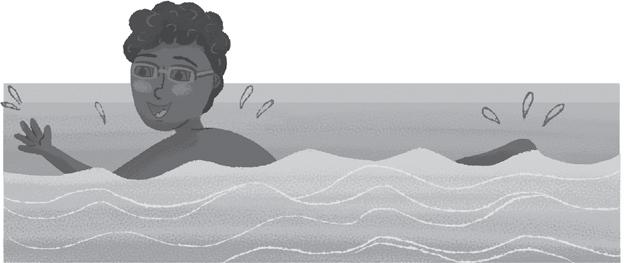
• 12:30 pm
• 10:30 am
• 4:30 pm
= 2 people
12 How many members are in the 14–17 year age group?
13 How many members are over 21 years?
14 How many members are under 10 years old?
15 How many members belong to the club?__________
16 Which age group represents 1 4 of the total membership? ___________
A 20 Oxford University Press ISBN 9780190338213 Constructs graphs using many-to-one scales MA3-DATA-01 Interprets data displays, including timelines and line graphs MA3-DATA-02 Data
Weekly spending $0 Categories Tax Rent Savings Food Sport Car Clothes $10 $20 $30 $40 $50 $60 Spending Age groups Ages of swimming club members 3 – 6 7 – 9 10 – 13 14 – 17 18 – 21 22 – 25 26 – 31 32 – 35
displays
Room temperature from 7 am–7 pm Time am pm Temperature °C 24 23 22 21 20 19 18 17 16 15 14 13 12 11 10 7 8 9 10 11 12 1 2 3 4 5 6 7 25
MP_NSW_AB5_38213_TXT_PPS_NG.indb 20 23-Aug-23 12:38:13
The six faces of a die used when playing board games are shown here. Each number has a 1 in 6 chance of being thrown.
Use the fractions 1 6 ,
,
,
1 A 6 is thrown first go.
6 and 6 6 to describe the likelihood of these outcomes.
2 A 2 is thrown first go.
3 An odd number is thrown first go.
4 An even number is thrown first go.
5 A number greater than 3 is thrown first go.
6 A number greater than 4 is thrown first go.
True or false
7 The total of all the fractions that describe the probability of throwing a number on the dice is 1. _______
Lucky colour wheel
8 What fraction describes the probability of the spinner landing on one of the sectors of the spinner?
Pink Pink Blue Blue
Pink Pink Pink Gold
9 What fraction would best describe the probability of the spinner landing on the pink sectors of the spinner?
10 Which colour has the best probability of being the winning colour?
11 Which colour has the least chance of being the winning colour?
Words such as impossible, unlikely, 50/50, likely and certain are often used by people when discussing the probability of an outcome occurring.
12 Draw a line to match each word to a place on the number line.
A 21 Oxford University Press ISBN 9780190338213 Conducts chance experiments and quantifies the probability MA3-CHAN-01 Chance
2
3
6 ,
6
4 6
5
1 10 0 2 10 3 10 4 10 5 10 6 10 7 10 8 10 9 10 1
1 6 1 6 1 6 1 6 1 6 1 6 Impossible Even chance Unlikely Likely Certain MP_NSW_AB5_38213_TXT_PPS_NG.indb 21 23-Aug-23 12:38:13
DRAFT
DRAFT
A 22 Oxford University Press ISBN 9780190338213 Notes MP_NSW_AB5_38213_TXT_PPS_NG.indb 22 23-Aug-23 12:38:13
DRAFT
A 23 Oxford University Press ISBN 9780190338213 Notes MP_NSW_AB5_38213_TXT_PPS_NG.indb 23 23-Aug-23 12:38:13
ASSESSMENT BOOK PRACTISE, MASTER, ASSESS
Maths Plus NESA Syllabus / Australian Curriculum Edition, Year K to 6 is a whole-school program based on the NSW Education Standards Authority Mathematics K–6 Syllabus for the Australian Curriculum.
Maths Plus follows a graded and spiralling approach, allowing teachers to revisit concepts throughout the year. It provides students with opportunities to sequentially develop, practise and master their skills and knowledge in the content strands of the Australian Curriculum: Mathematics:
• Number
• Measurement
• Statistics
• Algebra
• Space
• Probability
The Assessment Books feature post-tests to assess the concepts and skills developed in the Student Books and Mentals and Homework Books. Answers can be found online on the Maths Plus Teacher Dashboard.
www.oxfordowl.com.au
Oxford Owl is the home for Oxford Primary professional resources.
Printer DRAFT
logo

visit us at oup.com.au or contact customer support at oup.com.au/help 5 STAGE 3
780190 338213
9
FSC
ISBN 978-0-19-033821-3 MP_NSW_AB5_38213_TXT_PPS_NG.indb 24 23-Aug-23 12:38:14






















